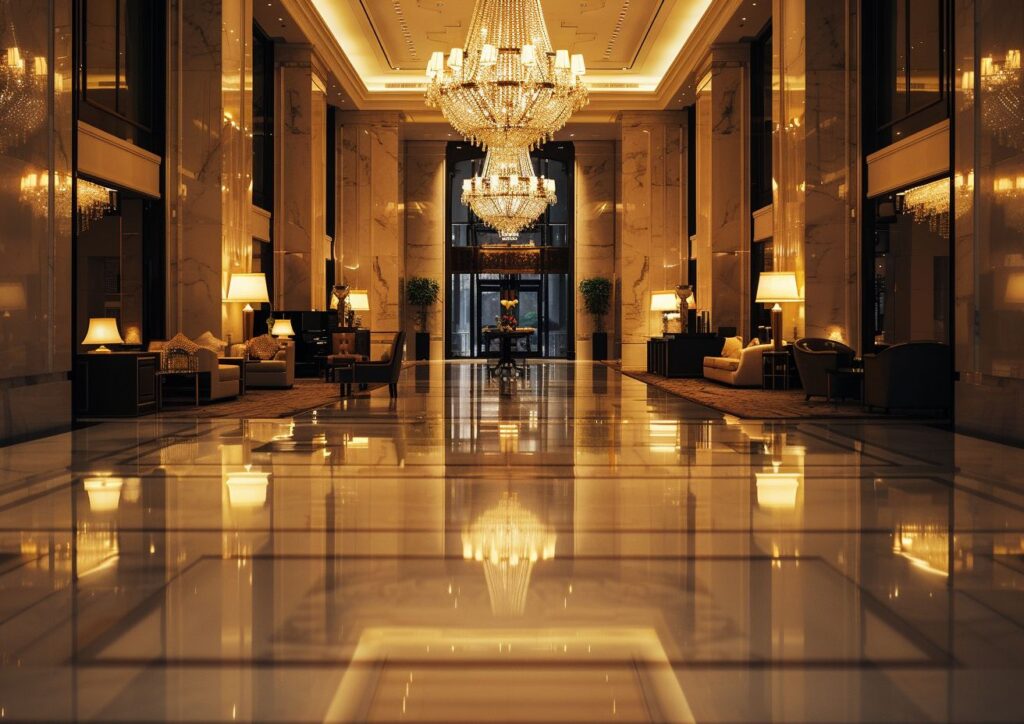When choosing lighting for a hotel, we are often caught in a tangle between style, function and ambiance. The wrong lighting not only detracts from the aesthetics, it can also ruin the guest’s stay. Want to know how to solve these problems perfectly? Read on!
When choosing hotel lighting, use a layered lighting approach that incorporates the selection and layout of light sources for specific areas to ensure the perfect balance of functionality and décor. In addition, choose consistent fixture designs and color temperatures to create a unified and coordinated visual effect.
In this article, we will talk about how to choose hotel lighting in detail, from layered lighting to area-specific light source selection, lighting layout and luminaire selection to help you create the perfect hotel environment.
1. Layered Lighting Method

Layered lighting design is used to combine functional and decorative lighting. This includes a mix of ambient, task and accent lighting to create depth and atmosphere in different areas.
2. Area-Specific Lighting
Choose the best lighting for a specific area:
2.1 Hotel Meeting Room, Work Area

We recommend using cooler light with a color temperature greater than 6000k to create a clear, bright and safe environment.
2.2 Corridors

We recommend a neutral light with a color temperature of 4500k-6000k, i.e. some clarity is needed to help guests find the room accurately, but also to create a bit of a warm ambient feeling.
2.3 Hotel Reception Area, Guest Rooms

We recommend using warmer, softer lighting, such as a warm light between 2700k-4000k, to create a homely feel.
If you still want to know more about color temperature, you can read this article – What is Color Temperature in Lighting?
3. Lighting Layout

The location of light switches needs to be planned to make it easy for guests to use them in their rooms, but also limit the switch positions in public areas to only be accessible to staff.
4. How to Choose the Right Lighting Fixtures for Your Hotel
We categorize hotel lighting fixtures into two types: main lighting fixtures and decorative fixtures. Using the right fixtures for a specific area is an important choice to ensure user experience and safety.
Primary Lighting Fixtures
The main light source is often referred to as “main lighting” or “ambient lighting”, the main function of this type of lighting is to provide uniform, extensive lighting to ensure that the entire space can get enough light to meet the needs of daily activities.
4.1 Chandeliers

Chandeliers can provide good ambient lighting and are also a decorative light fixture, usually used in hotel lobbies, restaurants and other areas to provide enough light and enhance the aesthetics of the space.
4.2 Ceiling Light

Ceiling light is a common main lighting fixture for corridors, guest rooms and other areas, providing even light coverage and ensuring enough light in every corner.
4.3 Recessed Downlight

Recessed downlights are installed in the ceiling and are suitable for use in meeting rooms, guest rooms and other areas, providing concealed and efficient lighting effects.
Decorative Luminaires
Decorative luminaires are used to enhance the aesthetics and ambience of a space and are often referred to as “decorative lighting” or “accent lighting”.
4.4 Table Lamps

Table lamps are often used on bedside tables or desks in guest rooms to provide warm and soft light and increase the comfort and functionality of the space.
4.5 Floor Lamp

Floor lamps are flexible decorative lamps that can be placed in guest rooms, rest areas and other locations to provide localized lighting while enhancing the sense of hierarchy in the space.
4.6 Wall Lamp

Wall lamps are suitable for corridors, guest rooms and other areas, and can be used as decorative lamps and lanterns as well as providing auxiliary lighting to increase the cozy atmosphere of the space.
5. Uniform Design

In a certain area, choose lamps of consistent type, design and color to create a uniform appearance and coordination throughout the hotel.
6. FAQ
- How do I choose the right materials for the luminaires?
Consider the durability, fire resistance and ease of cleaning of the fixtures to ensure safety and hygiene. - How to save energy in hotel lighting?
Choose LED luminaires, install dimmer switches, and utilize natural light sources as much as possible. - How to solve the problem of light pollution?
Use soft lighting and appropriate lampshades to avoid excessive light shining directly into guests’ eyes. - How can hotel lighting enhance the guest experience?
Create a warm and comfortable atmosphere through layered lighting design and appropriate color temperature selection to enhance the overall stay experience.
7. Conclusion
Choosing the right hotel lighting requires comprehensive consideration of layered lighting, light source selection for specific areas, lighting layout and fixture design to ensure a perfect balance of functionality and decoration to provide guests with the best stay experience.




